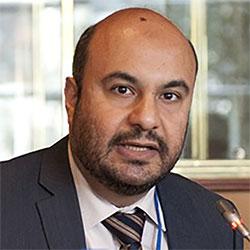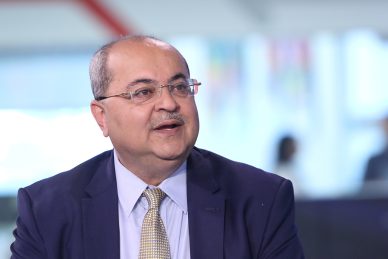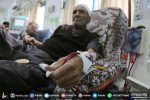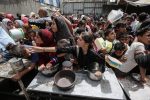Amid the ongoing killing of defenseless Palestinian demonstrators the Israeli leadership is engaged in a fierce and multifaceted war on photographers either by shooting at them or criminalizing them. Israel’s occupation authorities fear that photographs and video images will expose their brutality on the ground which may lead to the provision of evidence to help prosecute officers and soldiers in accordance with international criminal justice procedures.
In the past professional journalists rarely managed to reach the sites and locations where Israel was committing its crimes and human rights violations in time to record them for posterity because the army would declare the sites to be closed military zones. Images weren’t as much of a concern for the Israelis as they are today. Most of the killings assaults and abuse that Israeli soldiers and settlers committed in the past took place away from the scrutiny of the lens; only a few incidents were documented on camera and they usually caused an uproar by moving the world’s conscience.
This happened during the First Intifada that broke out in late 1987 and lasted for several years. A photographer captured shocking images of soldiers breaking the bones of young Palestinians. Soldiers were shown surrounding groups of handcuffed and blindfolded men before hitting them with stones repeatedly until their arms were broken.
There were also images of Palestinian children being used as human shields; Israeli soldiers tied them to the bumpers of their vehicles to protect themselves against stone-throwers. At the end of September 2000 Mohammad Al-Durra’s name was known around the world after he was shot and killed in his father’s arms despite his father repeatedly calling on the soldiers to stop firing. The scene ended with Abu Mohammad collapsing over his son’s body.
In 2003 photographers documented the crushing to death of human rights activist Rachel Corrie by an Israeli bulldozer. The US citizen was protesting against the razing of Palestinian homes to the ground in Rafah in the south of the Gaza Strip. In 2006 media lenses also captured the shock on the face of young Huda Ghalia on the beach in Gaza after an Israeli gunboat killed most of her family members in one murderous fusillade.
These events and others preceded the Palestinians’ use of smart phones linked to social media sites. This is the technological development that has raised concerns amongst the Israelis. While the soldiers are armed with their deadly weapons the Palestinians and activists supporting them are armed with their smartphones which can expose the actions of the soldiers in real time and may be enough to convict them in international courts one day.
Palestinian victims of Israeli brutality were once merely statistics reported in news reports but the new generation of citizen journalists takes their lives and their deaths into the public domain around the world within seconds. Anyone can thus get close to them get to know them feel their pain and anguish and sympathize in their tragedy. Modern high-resolution photography is being used to document Israeli war crimes which Israel fears due to the potential consequences. This has been expressed officially by warnings about “harming the morale of the soldiers.”
The mass killings committed by Israeli snipers on the fringe of the Gaza Strip a few short weeks ago marked a turning point in this issue. The massacre of peaceful protesters and the extensive injuries they sustained provoked global outrage so much so that even the pro-Israel lobby has been unable to justify Israel’s actions in the US and European media.
The so-called Israel Defense Forces fears that damning video footage documenting soldiers’ crimes will be used to prosecute them. Footage has emerged of soldiers standing on one of the hills near the border Gaza shooting Palestinian protesters and then cheering at the injuries they inflicted. Such footage is rare even though Israeli soldiers have regularly behaved in such a manner as they shoot at Palestinians and their homes.
This is why the government has introduced a bill in parliament — the Knesset — which would make it illegal to photograph soldiers in the act of carrying out their duties no matter that such duties often contravene international law. The initial reading of the bill was passed on 20 June.
This is how the Israeli government is declaring war on photographers and their images. Israel and its army have things they want to hide from the world which they understand that most people will find repulsive.
It was also noticeable during the Great March of Return protests in Gaza that the Israeli snipers were targeting professional journalists wearing very clear “PRESS” insignia on their vests. Those carrying cameras were particular targets. The killing of photojournalist Yasser Murtaja has become a symbol of the sacrifices made by journalists while doing their job in the besieged territory.
If images from the front line are no longer available from independent eyewitnesses to Israel’s crimes we can be certain that the government’s propaganda machine will swing into action to “prove” that the soldiers acted in “self-defense”. The Israelis will do anything to cover up their war crimes hide their rights violations and continue to try to justify what most reasonable people believe is unjustifiable. Photographers and journalists must be allowed to go about their work free from violence and threats to their lives.
– Hossam Shaker is a journalist and an author who has extensively covered the topic of migration in Europe. His article appeared in MEMO.












